SIP Trunking Solutions for Enhanced Communication in Education
Educational organizations face unique challenges in maintaining effective communication systems across diverse campus environments. From K-12 schools and community colleges to major universities, these institutions require reliable, secure, and cost-effective telecommunications solutions that connect administrators, faculty, students, and parents. Session Initiation Protocol trunking offers academic institutions a powerful approach to modernizing campus phone systems while reducing costs and enhancing collaboration capabilities.
DIDlogic specializes in providing IP-based voice solutions tailored specifically for education sector requirements. Our systems help schools and universities implement enterprise-grade communications that support both administrative efficiency and educational excellence.
What Are Internet-Based Voice Solutions for Academic Settings?
Many educational institutions continue operating outdated phone systems that drain budgets through excessive maintenance costs and limited functionality. These legacy systems often create barriers to effective communication between stakeholders while consuming IT resources that could better serve educational missions.
IP telephony transforms voice calls into digital data packets transmitted over internet connections rather than conventional phone lines. This fundamental shift delivers several immediate advantages particularly valuable for academic environments:
- Significant reduction in telecommunications expenses
- Enhanced emergency notification capabilities
- Integration with educational management systems
- Flexible deployment across multiple campus buildings
- Simplified administration for IT departments
- Advanced features previously available only to corporate enterprises
Forward-thinking educational leaders increasingly recognize these benefits, making digital voice communication a strategic investment rather than merely an operational expense.
Core Benefits for Educational Organizations
1. Budget Optimization and Cost Control
Educational institutions constantly face pressure to maximize limited budgets while maintaining essential services. Traditional phone systems require expensive dedicated lines for each connection, resulting in substantial monthly expenses regardless of actual usage.
Voice over IP technology dramatically reduces these costs through:
- Elimination of separate voice and data networks
- Reduction in per-line charges
- Decreased or eliminated long-distance fees
- Lower maintenance requirements for physical infrastructure
- More predictable monthly expenses
- Ability to redirect savings toward educational priorities
A typical mid-sized academic institution can reduce telecommunications expenses by 40-60% after implementing internet-based voice solutions. These savings directly benefit educational programs through resource reallocation.
2. Enhanced Emergency Response Capabilities
Campus safety remains a top priority for all educational organizations. Modern communication systems strengthen emergency preparedness through:
- E911 compliance with precise location information
- Mass notification capabilities across multiple devices
- Integration with campus security systems
- Priority routing for emergency communications
- Backup systems for continuity during power outages
- Detailed call records for incident investigation
DIDlogic’s solutions include robust emergency response features designed specifically for educational environments, helping institutions meet their safety obligations to students, staff, and visitors.
3. Streamlined Administration and Management
Educational IT departments must support diverse technology needs with limited resources. Cloud-based voice systems simplify management through:
- Centralized administration across multiple campus locations
- User-friendly web interfaces for common tasks
- Automated provisioning for new staff members
- Self-service options for basic user changes
- Detailed analytics for resource optimization
- Reduced dependence on specialized telecom expertise
These efficiencies allow IT staff to focus on educational technology initiatives rather than maintaining aging phone systems, creating better alignment between technology resources and institutional missions.
4. Improved Collaboration and Communication
Effective education depends on seamless communication between administrators, faculty, students, and parents. IP-based systems enhance these interactions through:
- Unified communications across departments and buildings
- Integration with email and messaging platforms
- Conference calling and virtual meeting capabilities
- Voicemail-to-email transcription for faster response
- Mobile extensions for staff on campus grounds
- Integration with classroom technologies
These capabilities strengthen the educational community by removing communication barriers between stakeholders, ultimately supporting better academic outcomes through improved collaboration.
5. Scalability for Campus Growth and Change
Educational institutions frequently experience changes in enrollment, add new buildings, or modify existing facilities. Cloud-based voice solutions adapt effortlessly to these changes:
- Quickly provision new locations without physical infrastructure
- Easily adjust capacity for changing staff levels
- Accommodate temporary facilities during renovations
- Implement specialized configurations for different departments
- Scale services up or down based on academic calendars
- Adapt to changing educational delivery models
This flexibility eliminates the communication bottlenecks that often accompany campus expansion or reorganization, allowing institutions to evolve without the constraints of outdated telecommunications infrastructure.
Implementation Considerations for Academic Environments
Campus Network Assessment
Voice quality depends heavily on network infrastructure. Before implementation, evaluate:
- Current bandwidth capacity and utilization
- Network segmentation capabilities
- Quality of Service (QoS) implementation
- Wireless coverage for mobile extensions
- Power backup systems for network equipment
- Security measures for voice traffic protection
Most modern campus networks can readily support voice communications with proper configuration. DIDlogic’s pre-implementation assessment helps identify any potential issues before they affect system performance.
Integration with Educational Systems
Maximum value comes from connecting communications with existing academic platforms:
- Student information systems
- Learning management systems
- Campus security and access control
- Directory services and authentication
- Emergency notification systems
- Administrative applications
Our solution architects design integration frameworks that connect voice communications with essential educational systems, creating unified workflows that enhance institutional effectiveness.
Phased Implementation Planning
Educational organizations typically benefit from gradual transitions rather than disruptive cutover approaches. DIDlogic recommends a measured implementation strategy:
- Assessment Phase: Evaluate current systems, document requirements, and establish transition goals
- Pilot Phase: Implement the solution in a single department or building
- Optimization Phase: Address any issues identified during the pilot
- Expansion Phase: Gradually transition additional campus areas
- Completion Phase: Decommission legacy systems after successful transition
This approach minimizes disruption to academic operations while allowing for adjustments based on actual experience within the specific educational environment.
Staff Training and Adoption
Successful implementation requires thoughtful change management and training:
- Role-based training for different user groups
- Administrative training for IT staff
- Documentation tailored to educational contexts
- Video tutorials for self-paced learning
- Specialized training for emergency protocols
- Ongoing support resources for new staff
DIDlogic’s training approach emphasizes practical usage in educational settings, ensuring faculty and staff can leverage all system capabilities to support institutional goals.
Technical Specifications
DIDlogic’s educational voice solutions include:
- Enterprise-Grade Connectivity: Standards-based SIP trunking
- Reliability Measures: Redundant connections and failover capabilities
- Voice Quality: HD audio with optimized network handling
- Management Tools: User-friendly administration portal
- Analytics: Comprehensive usage reporting and call statistics
- Security: Encryption and access controls
- Integration Framework: APIs for educational system connectivity
- Mobile Support: iOS and Android applications for campus mobility
Our engineers configure these components based on each institution’s specific requirements, ensuring the right balance of features, reliability, and cost-effectiveness.
Implementation Process with DIDlogic
1. Educational Needs Assessment
Our academic specialists begin by understanding your specific requirements:
- Current communication challenges and limitations
- Campus geography and building considerations
- Integration requirements with existing systems
- Security and emergency response protocols
- Administrative workflows and requirements
- Budget constraints and funding cycles
This consultation ensures we design a solution that addresses your unique institutional needs rather than a generic approach.
2. Solution Design
Based on assessment findings, we develop a tailored solution including:
- Technical specifications and capabilities
- Implementation timeline and milestones
- Training approach for different stakeholder groups
- Integration plan with academic systems
- Budgetary projections and ROI analysis
The proposal undergoes review with key stakeholders to ensure alignment with your educational objectives and operational requirements.
3. Phased Implementation
Our structured deployment process minimizes disruption to academic activities:
- Network preparation and optimization
- Number porting or provisioning
- System configuration and testing
- User setup and profile creation
- Integration with existing educational systems
Most implementations proceed in phases aligned with academic calendars to minimize any potential impact on educational operations.
4. Comprehensive Training
Role-based training ensures all stakeholders can effectively utilize the system:
- Administrative training for IT personnel
- Departmental training for faculty and staff
- Specialized training for front office personnel
- Documentation and reference materials
- Video tutorials for self-paced learning
- Refresher sessions after initial implementation
Our training approach emphasizes educational use cases, ensuring faculty and staff understand how the system supports their specific roles.
5. Ongoing Support and Optimization
DIDlogic provides continuous support as your institution evolves:
- 24/7 technical assistance
- Regular system updates and security patches
- Periodic reviews of system utilization
- Optimization recommendations based on usage patterns
- Consultation on emerging educational technologies
This ongoing relationship ensures your communication system remains aligned with your changing educational mission and objectives.
Security and Privacy Considerations
Educational institutions handle sensitive information subject to various regulations including FERPA (Family Educational Rights and Privacy Act). DIDlogic’s solutions incorporate multiple security layers:
- End-to-end encryption of voice communications
- Role-based access controls for system administration
- Secure integration with student information systems
- Detailed audit trails for compliance verification
- Data protection measures for recorded calls
- Network security best practices implementation
Our implementation team works closely with institutional IT security personnel to ensure all deployments meet or exceed educational data protection requirements.
Funding and Procurement Considerations
Educational organizations often have specific funding sources and procurement requirements for technology initiatives. DIDlogic offers several approaches that align with academic budgeting:
- E-Rate program compatibility for eligible institutions
- Capital vs. operational expense options
- Multi-year agreements aligned with budget cycles
- Phased implementation to distribute costs
- Grant-friendly documentation and justification
- Consortium pricing for educational systems
Our education specialists can provide appropriate documentation and pricing structures that align with your institution’s specific funding mechanisms and procurement policies.
Frequently Asked Questions
How does IP-based telephony improve campus emergency response?
Modern voice solutions enhance safety through several mechanisms. First, enhanced 911 (E911) features provide precise location information to emergency responders – down to specific buildings, floors, or rooms – critical in sprawling campus environments. Second, mass notification capabilities can instantly alert students and staff across multiple devices during emergencies. Third, priority routing ensures emergency calls receive bandwidth preference during high-volume situations. Finally, integration with campus security systems creates a unified emergency response framework, significantly improving incident management capabilities.
Can our institution keep existing phone numbers when transitioning?
Yes, number portability regulations allow educational institutions to retain existing phone numbers during the transition. DIDlogic manages the porting process with current carriers, ensuring continuity for parents, community members, and partner organizations. This capability preserves institutional identity and eliminates the considerable expense of updating printed materials, websites, and public information with new contact numbers.
How does voice quality compare to our current traditional phone system?
Modern IP telephony typically delivers superior audio quality compared to legacy phone systems when properly implemented. Today’s HD voice codecs provide significantly clearer sound than conventional analog connections. The key factors affecting quality are adequate network bandwidth, proper Quality of Service (QoS) implementation, and appropriate endpoint devices. DIDlogic’s pre-implementation assessment ensures these factors are optimized for your specific campus environment.
What network requirements should our IT department consider?
Voice communications require relatively modest bandwidth (approximately 85-100 Kbps per concurrent call) but demand consistent quality. More important than raw bandwidth is network configuration – including Quality of Service (QoS) implementation to prioritize voice traffic, network segmentation to separate voice from data traffic, and consistent performance across campus. DIDlogic provides detailed network recommendations based on your specific campus layout and existing infrastructure.
How do we manage communications during campus internet outages?
Business continuity features prevent communication disruptions during network issues. Automatic failover can route calls to mobile devices, alternate locations, or backup internet connections. For institutions requiring high availability, DIDlogic offers redundant connection options and comprehensive business continuity planning. These contingency measures ensure critical communications remain available during emergencies – precisely when they’re most essential.
Ready to Transform Your Educational Communications?
DIDlogic specializes in helping academic institutions implement secure, reliable, and cost-effective communication solutions. Our team understands the unique challenges facing educational organizations and designs systems that enhance collaboration while reducing operational expenses.
Contact our education solutions specialists to schedule a consultation and learn how internet-based voice services can support your institution’s educational mission.
Related Solutions:









